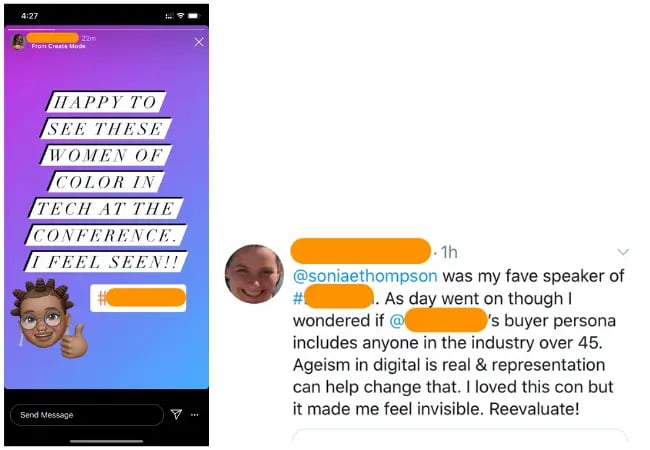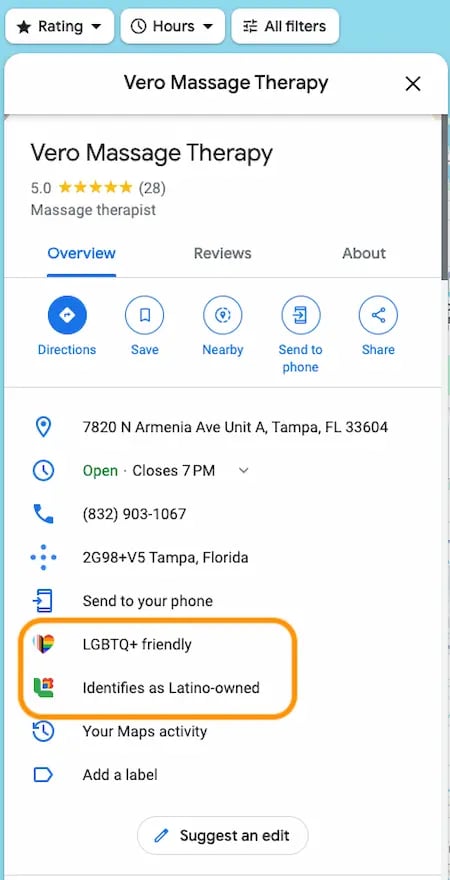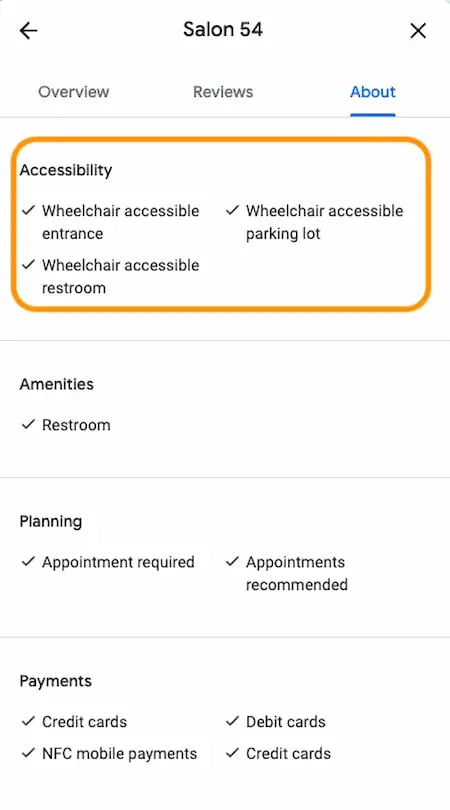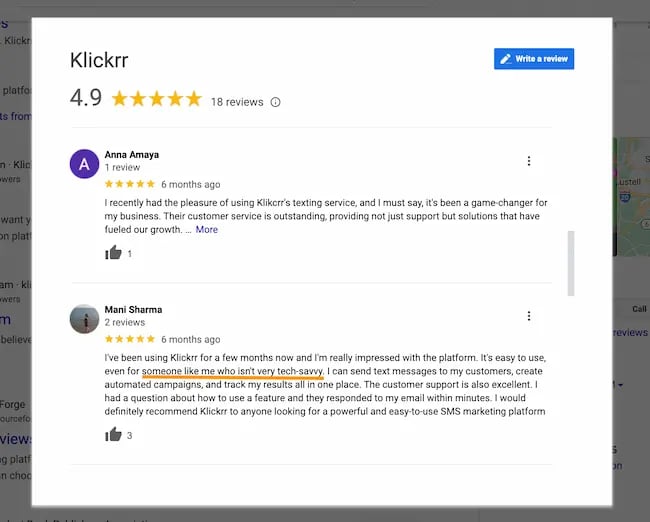How to Build an Inclusive SEO Strategy That Attracts and Converts More Customers
Welcome to Creator Columns, where we bring expert HubSpot Creator voices to the Blogs that inspire and help you grow better.
I’m an inclusive marketing consultant and the founder of Thompson Media Group. I also follow a gluten-free diet for health reasons. When I go to a restaurant’s website, I’m wondering, does their menu work for “People like me?”
Your ideal customers are going to have these questions, as “people like me” often refers to an identity consumers hold.
And, people with underrepresented and underserved identities often wonder about how their identity might impact the degree of success they can achieve with your brand and, if it will impact whether they’ll feel like they belong.
It’s up to you to ensure your brand sends the right signals with your content — to communicate “You Belong Here,” to all the people you want to serve. And, one of the best ways to do that is with an inclusive SEO strategy.
In this post, I’ll explain how to implement inclusive SEO strategies that help you draw in a diverse audience.
How to Communicate “You Belong Here” to The People You Serve
When you know the ‘why’ behind your customer’s questions, it’s easier to create SEO-based content that gets to the heart of what they need to learn about you.
My pro tip is to focus your efforts on delivering experiences that make it easy for your ideal customers to feel like three key statements are true for your brand:
- “This brand sees me and my identity.”
- “People like me have achieved success here.”
- “The customer experience for people like me has been considered.”
Let’s dive into how you can deliver on these ideals.
1.”This brand sees me and my identity.”
No one wants to feel invisible but, unfortunately, people from marginalized communities often feel ignored by brands who focus all their attention on those who are part of the “mainstream.”
That’s why people who are often ignored are so thrilled when a brand takes the time to “see them.”
I keynoted a conference a couple of years ago. Afterward, I saw social media comments from attendees who had referenced how the speaker lineup at the conference made them feel.
Here’s one example where the attendee felt “seen” because she liked seeing women of color like her represented by conference speakers.
And in the other example, the attendee felt invisible because she didn’t see any speakers in her age group.

In the State of Representation in Marketing study I conducted, 63% of respondents over 50 said it was important for them to see people in their age group represented in the brands they buy from.
Overall, age was the second most important factor to them in terms of areas of representation consumers of all ages needed to see to feel like they belong.
Make your customers feel seen by using your content to acknowledge that your customers are different in a way that feels authentic.
2. “People like me have achieved success here.”
The people you serve are coming to you because they want you to help them solve a problem, but not everyone achieves success at the same rate.
Over the years I’ve educated many clients about how consumers’ identities have a direct correlation to the degree of success they achieve.
As a brand, it is important for you to be aware of whether specific customers aren’t thriving as others are. This awareness positions you to put solutions in place to close any existing gaps.
Here’s an expert interview I conducted that explains this concept a little further, using an example called “The water vs. the fish principle.”
In this episode of the Inclusion & Marketing podcast, I go deeper into various factors that influence your customers’ success, such as race, gender, and sexual orientation, along with advice on how to mitigate them.
In the State of Representation in Marketing study, 52% of consumers said customer testimonials were the area of representation most important to them for the brands they are considering buying from.
Showcase people from underrepresented and underserved communities achieving success with your brand. Doing so will give people who share those identities confidence that they can achieve success with you as well.
3. “The customer experience for people like me has been considered.”
I haven’t met anyone who enjoys feeling like an afterthought.
But, far too often, consumers from underrepresented and underserved communities are treated like afterthoughts in the experiences brands deliver. This, in turn, results in a less-than-stellar experience when interacting with a brand.
In the video below, Erin Perkins, a disability advocate, shares her frustration with a common brand experience.
My pro tip is to show your customers they belong with you by delivering stellar experiences that work for all the identities you’re serving.
From talking to thousands of consumers, I’ve learned it is often the small details that make stellar experiences.
One consumer shared about a delightful experience at a hotel, “the towels were super plush and oversized to fit anyone’s size.
It is the small things.” Another consumer expressed gratitude that she didn’t have to ask for an accommodation with one brand, because it “was already available.”
And another consumer told me she wished brands knew “everyone is different, but we all wanted to be treated the same.”
Your customers, no matter their identity, want to feel like they are important as they go through your customer experience.
When consumers feel they are important, they are more likely to be loyal to you as a result. Consumers who feel like a burden or an afterthought will go somewhere else.
Components of an Inclusive SEO Strategy
Once you’ve defined which identities your brand will champion, focus on delivering content that speaks directly to those consumers.
Below I’ll go over the key components of an inclusive SEO strategy that will help you do exactly that.
1. Include SEO-optimized content on your website that answers common identity-based questions.
Many people from marginalized communities are aware of the ways in which they are different and how that impacts their experiences as consumers.
To minimize friction and poor experiences, they will often do advanced research to find out whether or not a brand is for them before making a purchase.
Having SEO-optimized content on your website will help them find the information they need quickly.
In addition, the fact that you’ve taken the time to proactively provide content about the specific topic they’re concerned with showcases that you “see” consumers who have this need and that you considered their experience in advance.
For example, I follow a gluten-free diet. Anytime I’m considering a new restaurant, I need to browse their menu in advance to find out if there are options for me to eat.
However, restaurants often don’t have that information available on their websites. Sometimes I conduct a secondary search to try and find a menu, but I land on unrelated websites like Find Me Gluten-Free.
It’s a missed opportunity. And, almost every time this happens, I end up going to a different restaurant that caters to gluten-free diets and clearly highlights this in its menu options online.
This page from Google’s website is a good example. It showcases the accessibility features of Google Pixel phones by including a sponsored video.
It also includes testimonials from individuals in the disability community who use the features to accomplish their goals.
![]()
My pro tip: Think about the various identities of the people who have the problem your brand solves. Then brainstorm what common identity-based questions they will have, and create content on your site that makes it easy for them to get the answers to their questions, so they can move forward with you.
2. Create an optimized Google Business Profile.
My husband once searched ‘peluqueria’ (the word for barbershop in Spanish) on Google, and got no local results. When I queried “barber shop,” I got a result for a location less than 50 feet from where we stood.
Simple adjustments to that business’ Google Business Profile, would have helped it appear for my husband searching in Spanish.
Vero Massage Therapy is a great example of an optimized Google Business Profile, as it makes it clear to LGBTQ+ and Latino communities that they are welcome at the spa.

Salon 54, pictured below, also does a great job at this by including key accessibility information to let all visitors understand their options.

To activate this inclusive SEO strategy for yourself, create a Google Business Profile and add the attributes that make sense for your brand based on the customers you serve.
I have a podcast episode, linked below, all about how to optimize your profile for multiple languages and identity groups.
Real customers can also leave reviews (and you can encourage them to do so) of your business highlighting their experiences.
When prospective customers see uncurated reviews from people like them on your profile, it gives them the confidence they need to take the next step forward with you.
The image below is from Klickrr, a text-marketing software company that has customer reviews on its Google Business Profile.

3. Understand your brand’s values and how you live those values over time.
HubSpot’s Consumer Trend Survey found that consumers care that companies take a stance on social issues, and 42% of consumers are more likely to buy from a brand based on their commitments to diversity and inclusion.
The people you serve want to know what your brand values are, and how you practice them on a daily basis.
This could look like creating content that talks about your journey to inclusivity and how you build relationships with and support different communities.
I think MindBodyGreen is a great example of doing this successfully, especially with their blog post highlighting why they removed the word “infertility” from their website.
Sephora also does this by highlighting their progress toward their diversity goals.
The Home Depot also communicates its lived values with content highlighting its “Retool Your School” program, which supports historically Black colleges and universities (HBCUs).
The program has existed for 15 years, and the brand’s YouTube channel even has a playlist of the impact the program has had on campuses over the years.
My pro tip is to implement this component of an inclusive SEO strategy by creating content that highlights your values, and then continuing to publish SEO-optimized content that demonstrates how you’re living your values.
Your customers won’t know about your values or how you live them if you don’t tell them. It isn’t bragging, or being performative to talk about the work you are doing and the impact you are having on communities.
It’s an inspiring way for the people you serve to see what you’re doing and hold you accountable to your goals.
Besides, the more consumers are able to see your commitment to causes and communities that are also important to them, the more drawn they will be to your brand.
Small Tweaks Can Make Your SEO Strategy More Inclusive
Any effective strategy has to start by understanding your customers.
Acknowledge the diverse identities of your customers, and work to deliver experiences through your content that satisfy the questions people with different identities might have when it comes to your brand.
When you show that your values align, conversions increase.
![]()


![→ Download Now: SEO Starter Pack [Free Kit]](https://no-cache.hubspot.com/cta/default/53/1d7211ac-7b1b-4405-b940-54b8acedb26e.png)
